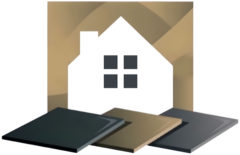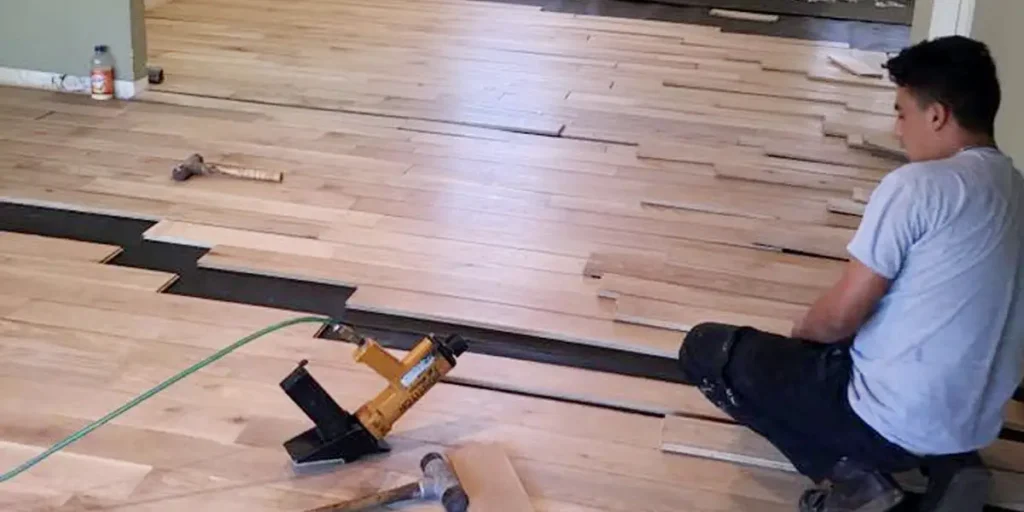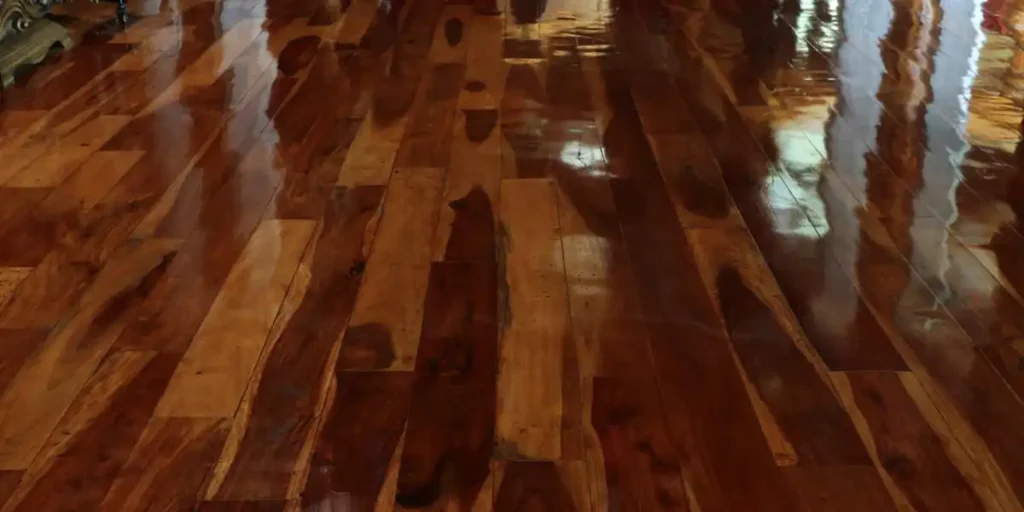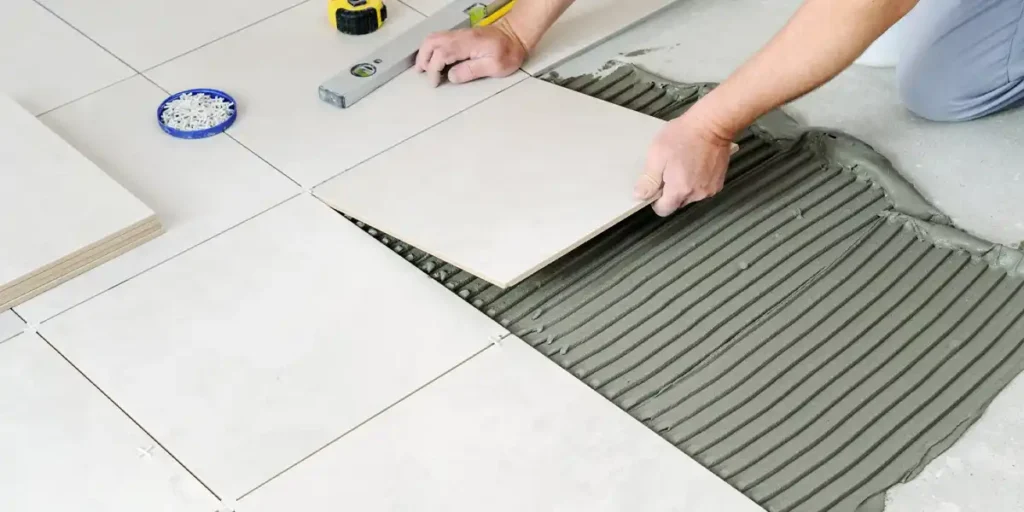Hardwood floors bring elegance, warmth, and lasting value to any home. However, the process of choosing, installing, and maintaining them can be fraught with potential pitfalls. With such a significant investment at stake, the margin for error is small.
Whether you’re considering a DIY installation or hiring professionals, understanding and avoiding common hardwood flooring mistakes can save you time, money, and frustration.
This guide is here to help you navigate these challenges and achieve the flawless finish you’re dreaming of.
Choosing the Right Wood: The Foundation of a Perfect Floor
Selecting the right wood species and grade is crucial. It’s more than just picking a beautiful sample at the showroom; it’s about balancing aesthetics, functionality, and durability to fit your specific needs.
Understanding Wood Species and Their Properties
Each wood species has unique characteristics:
- Oak: Highly durable and scratch-resistant, ideal for high-traffic areas.
- Maple: Sleek and modern but softer, making it more prone to dents.
- Hickory: Tough and resilient, perfect for homes with pets or children.
Choose a wood that suits your lifestyle. If your household has heavy foot traffic or pets, durability will outweigh appearance. On the other hand, if aesthetics are your top priority, softer woods might suffice for low-traffic areas.
Climate Considerations: The Hidden Factor
Climate plays a significant role in how hardwood behaves over time. In humid regions, wood tends to expand, while in dry climates, it contracts. Selecting a stable wood species, such as engineered hardwood, and ensuring proper acclimation before installation can prevent warping, cupping, or splitting. Ignoring climate considerations is a common yet preventable hardwood flooring mistake that leads to costly repairs.
Installation: Where Precision Meets Patience
Even the best hardwood flooring can look subpar if poorly installed. The installation phase is often where homeowners make costly mistakes, but with the right approach, these issues can be avoided.
Subfloor Preparation: The Bedrock of Stability
An uneven subfloor is a recipe for disaster. It can lead to squeaking, gapping, and uneven planks. Before laying hardwood, ensure the subfloor is clean, dry, and level. Use leveling compounds if needed, and never rush this step. A poorly prepared subfloor undermines even the finest hardwood and creates issues that are difficult to fix later.
Acclimation: The Silent Protector
Wood is a natural material that adjusts to its environment. Failing to let your hardwood acclimate to the room’s humidity and temperature is a rookie mistake. Allow at least 48-72 hours for acclimation to minimize the risk of post-installation problems like warping or splitting.
The Right Tools and Techniques
Installing hardwood flooring requires precision and the right tools. Using improper tools can lead to jagged cuts, uneven edges, or damaged planks. If you’re not confident in your abilities, hiring a professional installer is a worthwhile investment to avoid these pitfalls.
Maintenance: Safeguarding Your Investment
Hardwood floors require ongoing care to maintain their beauty and durability. Neglecting proper maintenance is one of the easiest ways to diminish your investment.
Regular Cleaning: A Simple Routine with Big Payoffs
Daily sweeping or vacuuming removes dirt and debris that can scratch the floor’s finish. Weekly damp mopping with a hardwood-specific cleaner ensures a pristine surface without damaging the sealant. Avoid using excessive water or soaking the floor, as this can lead to warping over time.
Avoid Harsh Chemicals
Harsh cleaning agents or abrasive tools can strip the finish and dull the wood’s natural shine. Stick to pH-neutral, hardwood-safe cleaners and use microfiber mops to avoid unnecessary damage.
Protective Measures: Small Steps, Big Impact
Simple precautions can extend the life of your floors significantly:
- Place felt pads under furniture legs to prevent scratches.
- Use rugs or mats in high-traffic areas to shield the wood.
- Maintain consistent indoor humidity to minimize expansion and contraction.
Common Mistakes and Effective Solutions
Even with the best intentions, mistakes happen. The good news is that many issues are fixable.
Gapping and Buckling
Gaps often result from improper acclimation or environmental changes. Use wood filler for minor gaps or consider refinishing for severe cases. Buckling, caused by excess moisture, may require plank replacement.
Scratches and Dents
Minor scratches can be buffed out using a wood repair kit, while deeper dents might require sanding and refinishing. For significant damage, replacing affected boards ensures a seamless look.
Creaking Floors
Creaking is usually due to an uneven subfloor or loose planks. Reinforce problematic areas with screws or nails, or consult a professional for more extensive repairs.
Final Thoughts
Hardwood flooring is a timeless investment that enhances your home’s aesthetic and value. Avoiding common mistakes whether in selecting the right wood, ensuring proper installation, or maintaining the floors—ensures your investment lasts for decades.
By understanding potential pitfalls and addressing them proactively, you can enjoy stunning hardwood floors that remain a source of pride for years to come.
When in doubt, contact Cardenas Flooring for guidance on installation, maintenance, or repairs. The extra effort and expense upfront will pay dividends in the long-term beauty and durability of your hardwood floors.
FAQs
What is the best way to prepare a subfloor for hardwood installation?
Preparing the subfloor is crucial for a flawless hardwood flooring installation. Ensure the subfloor is clean, dry, and level. Remove any debris, repair cracks, and use a self-leveling compound if needed. For wood subfloors, secure loose boards and check for squeaks, fixing them with screws or nails. Moisture testing is essential to ensure the subfloor is not too damp, as excessive moisture can cause warping or buckling. Proper preparation provides a stable foundation, reduces installation issues, and prolongs the life of your hardwood flooring.
How long should hardwood acclimate before installation?
Hardwood flooring should acclimate to the room’s environment for at least 48 to 72 hours before installation. This step allows the wood to adjust to the temperature and humidity, minimizing expansion or contraction after it’s installed. For areas with significant climate fluctuations, acclimation might take longer. Spread the planks out in the room where they will be installed and avoid stacking them to ensure even acclimation. Skipping this step can lead to issues like warping, gapping, or buckling, which are often costly to repair.
Can I install hardwood flooring in humid areas?
Yes, but with precautions. Solid hardwood is not ideal for high-humidity areas as it expands and contracts with moisture changes. Engineered hardwood, which has a layered construction, is a better choice due to its moisture resistance. Use a dehumidifier to regulate indoor humidity levels, keeping it between 30% and 50%. Avoid installing hardwood in areas like bathrooms or basements without proper moisture barriers. Choosing the right hardwood type and maintaining consistent humidity levels can prevent damage in humid environments.
What are the common signs that hardwood flooring needs refinishing?
Signs that your hardwood floors need refinishing include dull or faded finish, visible scratches, deep stains, and areas where the protective layer has worn away, exposing bare wood. If water no longer beads up on the surface but soaks in, it’s time to refinish. Regular refinishing every 7-10 years helps maintain the beauty and durability of your floors. For high-traffic areas, you may need to refinish sooner. Proper care, like using rugs and cleaning with hardwood-specific products, can extend the time between refinishing.
Can hardwood floors be installed over radiant heating?
Yes, hardwood flooring can be installed over radiant heating systems, but precautions are necessary. Engineered hardwood is a better option than solid wood, as it resists heat-related expansion and contraction. Ensure the heating system is calibrated properly, with temperatures not exceeding manufacturer recommendations (usually around 80°F). Acclimate the wood to the room temperature and humidity, and use a floating floor installation method for best results. Consulting with flooring and heating professionals ensures a seamless and safe installation.




